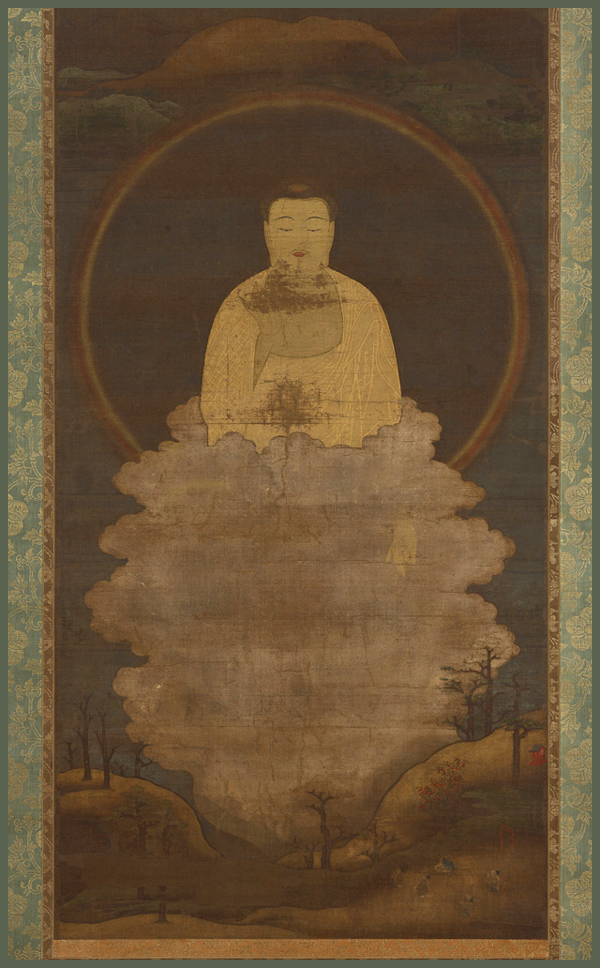https://edoflourishing.blogspot.com/2022/01/somei-shichiken-komagome.html
[ . BACK to DARUMA MUSEUM TOP . ]
. Famous Places and Power spots of Edo 江戸の名所 .
. Edo shokunin 江戸の職人 Craftsmen of Edo .
::::::::::::::::::::::::::::::::::::::::::::::::::::::::::::::::::::::::::::::::::::::::::::::::::::::::::::::::::::::::::::::::::::::::::::::::::::::::::::::::::::::::::::::::::::
Somei Shichiken mura 染井七軒村 Seven Villages of Somei
There were at one time seven Komagome sub-districts, called
Komagome shichiken mura 駒込七軒村 Seven villages of Komagome.
They also used to be called
. Somei shichiken mura 染井七軒村 .
- quote
Somei Gardener 染井之植木屋 Somei no Uekiya
The village of Somei, currently the Sugamo and Komagome areas of Toshima Ward,
was the area where many gardeners lived.
The famous "Somei Yoshino" cherry tree is said to have been named after this village,
as it was born in Somei village.
- source : Tokyo Metropolitan Museum
- quote -
Somei 染井 in Edo
the Somei area -- a general name given to a cluster of small towns and villages that specialize in growing ornamental plants and trees to plant in the gardens of all the wealthy daimyo in Edo. The two main towns in this area are Komagome and Sugamo, but most people in Edo know the area as "Somei" and the farmers who live in the region are known as the Somei uekiya (the landscape gardeners of Somei). They get their reputation from their great skill in raising thousands of different types of ornamental plants. The farms in the Somei area produce most of the ornamental plants that the daimyo plant in their gardens, and many flower markets are held in the small towns along the Nakasendo, where common people can also buy flowers, trees and shrubs.
In fact, even the beautiful gardens inside Edo Castle are landscaped and tended by gardeners from Somei.
Somei is the home of one of the most famous gardeners in Edo: Ihei Masatake.
Masatake is the son of perhaps the greatest landscape gardener ever -- Ihei Sannojo,
and many believe that Masatake is as good at actual gardening as his famous father.
- Continue reading here :
. Somei Gardeners .
江戸の園芸について、浮世絵 Edo Gardening seen through Ukiyo-E
ソメイヨシノ/染井吉野/そめいよしの Somei Yoshino Cherry Blossoms
Edo Engei Hanazukushi 江戸園芸花尽くし
at 太田記念美術館
::::::::::::::::::::::::::::::::::::::::::::::::::::::::::::::::::::::::::::::::::::::::::::::::::::::::::::::::::::::::::::::::::::::::::::::::::::::::::::::::::::::::::::::::::::
Komagome Shichiken Cho 駒込七軒町 Komagome Chichiken Town
北豊島 Kita-Toshima
This district was abolished in 1869.
Now it is called 豊島区駒込一、三丁目Toshima ward, Komagome first and third district.
- - - - -
【北豊島】染井七軒町 Kita Toshima, Somei Shichiken Town
This district was abolished in 1869.
- reference source : amebaownd.com/posts ... -
::::::::::::::::::::::::::::::::::::::::::::::::::::::::::::::::::::::::::::::::::::::::::::::::::::::::::::::::::::::::::::::::::::::::::::::::::::::::::::::::::::::::::::::::::::

- - - To join me on facebook, click the image !
:::::::::::::::::::::::::::::::::::::::::::::::::::::::::::::::::::::::::::::::::::::::::::::::::::::::::::::::::::::::::::::::::::::::::::::::::::::::::::::::::::::::::::::::::::::
. Komagome in 文京区 Bunkyo ward .
. Toshima 豊島区 Toshima ward, "Rich Island" .
. Famous Places and Powerspots of Edo 江戸の名所 .
. Doing Business in Edo - 商売 - Introduction .
. Legends and Tales from Japan 伝説 - Introduction .
[ . BACK to DARUMA MUSEUM TOP . ]
[ . BACK to WORLDKIGO . TOP . ]
- - - - - ##somei #someishichiken #shichiken #komagome - - - -
:::::::::::::::::::::::::::::::::::::::::::::::::::::::::::::::::::::::::::::::::::::::::::::::::::::::::::::::::::::::::::::::::::::::::::::::::::::::::::::::::::::::::::
https://edoflourishing.blogspot.com/2022/01/somei-shichiken-komagome.html
.
Somei Shichiken Komagome
. Famous Places and Power spots of Edo 江戸の名所 .
. Edo shokunin 江戸の職人 Craftsmen of Edo .
::::::::::::::::::::::::::::::::::::::::::::::::::::::::::::::::::::::::::::::::::::::::::::::::::::::::::::::::::::::::::::::::::::::::::::::::::::::::::::::::::::::::::::::::::::
Somei Shichiken mura 染井七軒村 Seven Villages of Somei
There were at one time seven Komagome sub-districts, called
Komagome shichiken mura 駒込七軒村 Seven villages of Komagome.
They also used to be called
. Somei shichiken mura 染井七軒村 .
- quote
Somei Gardener 染井之植木屋 Somei no Uekiya
The village of Somei, currently the Sugamo and Komagome areas of Toshima Ward,
was the area where many gardeners lived.
The famous "Somei Yoshino" cherry tree is said to have been named after this village,
as it was born in Somei village.
- source : Tokyo Metropolitan Museum
- quote -
Somei 染井 in Edo
the Somei area -- a general name given to a cluster of small towns and villages that specialize in growing ornamental plants and trees to plant in the gardens of all the wealthy daimyo in Edo. The two main towns in this area are Komagome and Sugamo, but most people in Edo know the area as "Somei" and the farmers who live in the region are known as the Somei uekiya (the landscape gardeners of Somei). They get their reputation from their great skill in raising thousands of different types of ornamental plants. The farms in the Somei area produce most of the ornamental plants that the daimyo plant in their gardens, and many flower markets are held in the small towns along the Nakasendo, where common people can also buy flowers, trees and shrubs.
In fact, even the beautiful gardens inside Edo Castle are landscaped and tended by gardeners from Somei.
Somei is the home of one of the most famous gardeners in Edo: Ihei Masatake.
Masatake is the son of perhaps the greatest landscape gardener ever -- Ihei Sannojo,
and many believe that Masatake is as good at actual gardening as his famous father.
- Continue reading here :
. Somei Gardeners .
江戸の園芸について、浮世絵 Edo Gardening seen through Ukiyo-E
ソメイヨシノ/染井吉野/そめいよしの Somei Yoshino Cherry Blossoms
Edo Engei Hanazukushi 江戸園芸花尽くし
at 太田記念美術館
::::::::::::::::::::::::::::::::::::::::::::::::::::::::::::::::::::::::::::::::::::::::::::::::::::::::::::::::::::::::::::::::::::::::::::::::::::::::::::::::::::::::::::::::::::
Komagome Shichiken Cho 駒込七軒町 Komagome Chichiken Town
北豊島 Kita-Toshima
This district was abolished in 1869.
Now it is called 豊島区駒込一、三丁目Toshima ward, Komagome first and third district.
- - - - -
【北豊島】染井七軒町 Kita Toshima, Somei Shichiken Town
This district was abolished in 1869.
- reference source : amebaownd.com/posts ... -
::::::::::::::::::::::::::::::::::::::::::::::::::::::::::::::::::::::::::::::::::::::::::::::::::::::::::::::::::::::::::::::::::::::::::::::::::::::::::::::::::::::::::::::::::::

- - - To join me on facebook, click the image !
:::::::::::::::::::::::::::::::::::::::::::::::::::::::::::::::::::::::::::::::::::::::::::::::::::::::::::::::::::::::::::::::::::::::::::::::::::::::::::::::::::::::::::::::::::::
. Komagome in 文京区 Bunkyo ward .
. Toshima 豊島区 Toshima ward, "Rich Island" .
. Famous Places and Powerspots of Edo 江戸の名所 .
. Doing Business in Edo - 商売 - Introduction .
. Legends and Tales from Japan 伝説 - Introduction .
[ . BACK to DARUMA MUSEUM TOP . ]
[ . BACK to WORLDKIGO . TOP . ]
- - - - - ##somei #someishichiken #shichiken #komagome - - - -
:::::::::::::::::::::::::::::::::::::::::::::::::::::::::::::::::::::::::::::::::::::::::::::::::::::::::::::::::::::::::::::::::::::::::::::::::::::::::::::::::::::::::::
https://edoflourishing.blogspot.com/2022/01/somei-shichiken-komagome.html
.
















































